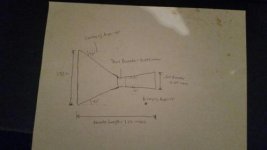My son's senior class project (Aerospace Engineering)is for his group to construct a model rocket with hybrid motor.
I've been asked to machine to motor's nozzle(diverging/converging)using graphite rod that they're sending me. No knowledge/experience with this material- and no idea of "grade" or other info as to exactly what they're sending me. Small stuff- only a couple of inches long and IIRC about 1-1/2" diameter.
I use a manual lathe, typically run carbide tooling but have HSS I can grind up if that's preferable.
Suggestions for machining this stuff (tooling, speeds/feeds)? Cover the ways? Vacuum for dust?
Thanks in advance for any tips.
I've been asked to machine to motor's nozzle(diverging/converging)using graphite rod that they're sending me. No knowledge/experience with this material- and no idea of "grade" or other info as to exactly what they're sending me. Small stuff- only a couple of inches long and IIRC about 1-1/2" diameter.
I use a manual lathe, typically run carbide tooling but have HSS I can grind up if that's preferable.
Suggestions for machining this stuff (tooling, speeds/feeds)? Cover the ways? Vacuum for dust?
Thanks in advance for any tips.



